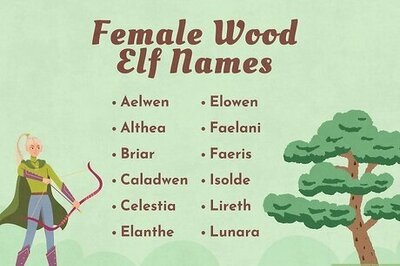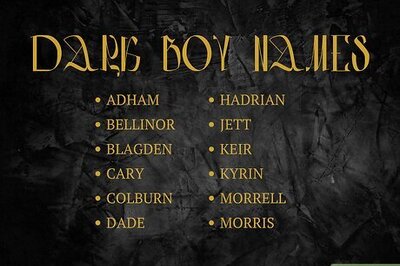
views
Chinese Foreign Minister Qin Gang has cautioned the United States (US) over its approach on Taiwan, saying on Tuesday that no country has a right to interfere in what China regards as its domestic affairs.
During his first press conference after becoming the Foreign Minister, Qin read out the Constitution on the spot.
“It is a sacred duty of all Chinese people, including Taiwan Compatriots, to accomplish the great cause of reunifying the motherland,” he said.
That leads to two questions — Will China will invade Taiwan? If yes, then when?
THE ANSWERS
Many in Taiwan who deal with Mainland China believe the next few years are significant, as they are comparatively less prepared to take on China, and the latter is aware of it and could use it to plan an invasion.
Some say the possibility of invasion increases even more as Xi Jinping secured the third term as a leader of China and in his speech he reiterated the goal of peaceful ‘reunification’ of Taiwan without renouncing the possible use of force.
Many say as the world is divided into two blocs, which was visible during the G20 Foreign Ministers’ meet, and Russia and China are coming closer, China could take the big step to corner the United States along with Russia. China believes that the US is forming a NATO-like alliance in the Indo-Pacific area to counter the rise of China, which could lead to more confrontation.
China is also set to increase its military spending to about 225 billion dollars this year, a 7.2% hike compared to 2022 amid rising tensions with the US and its neighbours over Taiwan, the disputed South China Sea and the control of the Indo-Pacific Region.
The Central Intelligence Agency (CIA) director says the U.S. intelligence shows that Jinping has instructed his country’s military to “be ready by 2027” to invade Taiwan.
Since the Russian invasion of Ukraine, this debate has been raging. The support of the US and European allies for Ukraine may be acting as a potential deterrent to Chinese officials for now, but the risks of a possible attack on Taiwan will only grow.
TAIWAN: A COMPLICATED TARGET
Comparing China and Russia, the two countries have very different strategic priorities. First, there isn’t great difference in their economic and military capabilities and potential. China has the second largest GDP in the world with an economic growth more sustainable than Russia. As China is the ‘world factory’, China is better connected to world economy than Russia.
Taiwan is a more complicated target for an invasion. The Taiwan strait is narrow with a width of less than 100 miles at its narrowest part, and China has deployed a large number of missiles along its coast pointing to Taiwan, but given the large number of advanced weapon system Taiwan imports from the US, it would not be easy.
Taiwan’s GDP is over three times of Ukraine’s and Taiwan is far more important than Ukraine in the region technologically as it is an IT centre and a major chip producer in the world.
THE STRATEGIES
ODC: Retired Chief of the general Staff of the Republic of China (Taiwan) has developed and introduced the Overall Defense Concept (ODC). The ODC is Taiwan’s current strategy to deal with a potential Chinese invasion in a resource-constrained environment.
Porcupine Strategy, asymmetrical warfare: The Porcupine Doctrine was proposed in 2008 by US Naval War College research Professor William S Murray.
It is about building defences that would ensure that Taiwan could be attacked and damaged, but not defeated, at least without unacceptable high costs and risks.
The same has been referred by Lee Hsi Ming in the ODC.
Rather than focusing on buying tanks, warships, and naval vessel, the strategy opts for flexible and easily concealed weapons such as the portable javeline and stinger missile system.
In short, more small ships, more missiles, better drone technologies (UAVs) and Mobile Coastal Defence Cruise Missile (CDCMs).
Man-portable-air-defence systems (MANPADS) and mobile anti-armour weapons such as high mobility rocket systems (HIMARS) will be used in cities.
Taiwan is also preparing for guerrilla warfare, in case China succeeds to send soldiers to Taiwan. The US is sending about 200 troops to Taiwan to train Army and Taiwan Army is also being trained on the US soil.
Taiwan learns its lessons from the ongoing war in Ukraine, but the focus is also to keep airspace safe. Taiwan is also building a specialised mechanism to shoot down the Chinese spy balloons and in a recent announcement, the country is going to buy F-16 Munitions, 100 AGM-88B High Speed Anti-Radiation Missiles (HARM), 200 AIM-120C-8 Advanced Medium Range Air-to-Air Missiles(AMRAAM) and launchers.
ROLE OF INDIA
An updated BIA (Bilateral Investment Agreement) was signed between India and Taiwan in December 2018, India and Taiwan also signed an AEO (Authorised Economic Operator) mutual recognition agreement, a customs mutual assistance agreement, and ATA Carnet (passport for goods).
“Taiwan is keen to share its expertise with India in critical sectors such as semiconductors, 5G, information security, artificial intelligence and looks at the potential to become good partner in India’s economic growth. Taiwan imports 70% of agricultural requirement, but only 30% is produced. The country sees huge opportunities for Indian companies working in agricultural sector,” says a senior official in the government of Taiwan.
THE SIGNING OF FTA OR ECONOMIC COOPERATION
The agreement will further remove all trade and investment barriers, bring down the tariff and more companies will invest in India.
“To build on the momentum of increasing bilateral investment and trade collaboration, it is high time Taiwan and India considered signing an FTA at the earliest possible in order to create a secure and resilient supply chain and more value added platforms for long term cooperation,” said Baushan Ger, representative of Taiwan to India to PTI in October.
Platforms such as Raisina Dialogue held in New Delhi invited Taiwanese politician such as Szu-Chien HSU, who has served as a deputy foreign minister and currently serving as a board member for institute for national defense and security research.
The bilateral relations between India and Taiwan have improved since the 1990s, despite both nations not maintaining official diplomatic relations.
India’s economic and commercial links and people to people contacts with Taiwan have expanded. In May 2020, two Members of Parliament attended President Tsai’s swearing-in ceremony.
As part of ‘Look East’ foreign policy, India has sought to cultivate extensive ties with Taiwan in trade and investment.
In 1999, Narendra Modi visited Taiwan during his tenure as the Bharatiya Janata Party’s (BJP) general secretary.
In 2019, India-Taiwan trade volume was US $ 7 billion. Companies such as Hon Hai Precision Industry Co (FoxConn), Sanyang Corporation, Gigabyte Technologies, CTCI, Transcend, Mediatek and many others are working in India or with Indian companies.
Read all the Latest India News here


















Comments
0 comment